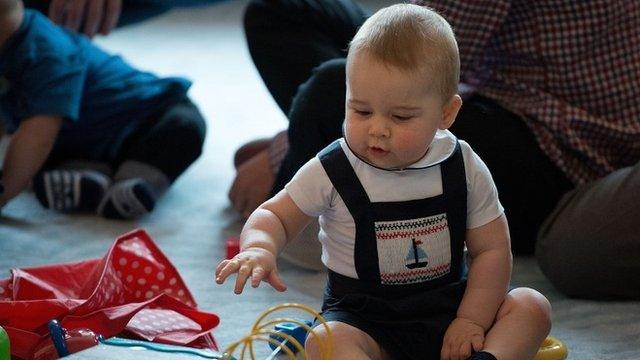Royal tour: Prince George steals the show as support for monarchy rises
- Published
Highlights from William and Kate's two week tour of Australia and New Zealand
As the royal tour draws to a close, there's no doubt Prince George stole the limelight. But what has the young family's visit revealed about Australia and New Zealand's attitudes to the monarchy?
From the moment he was carried down the aircraft steps by his mother on their arrival in New Zealand on Monday 7 April, Prince George was the star of the show.
He has only appeared twice (other than at airports) and even then the settings have been carefully managed - first at a specially convened playgroup in Government House, Wellington and then, memorably, at a new enclosure at Taronga Zoo in Sydney.
On each occasion the appeal of a nine-month-old future king has upstaged even the glamour of a future queen consort and her husband.
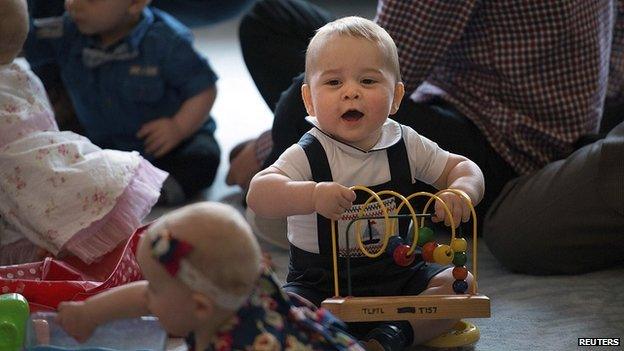
One of just two public appearances for Prince George was at a playgroup in Wellington
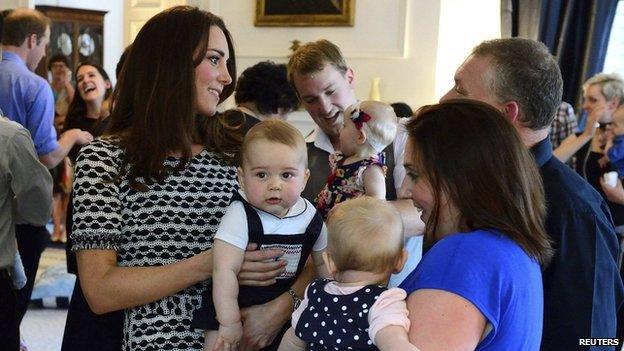
Prince George often "stole the show" on his first overseas visit

The young prince was entrusted to the safe arms of his father as the family left New Zealand for the second leg of the tour in Australia
But while George's photogenic power may have captured the largest proportion of front pages, the real significance of this visit surely lies in what it has revealed about the attitudes within Australia and New Zealand towards the monarchy.
Republican support 'low'
The reception in both countries has been extremely warm. The crowds have on occasions been large, though not massive. The days have gone when hundreds of thousands would turn out to catch a glimpse of a visiting royal.
That is certainly how it was when the Queen made her first visits to Australia and New Zealand in the early stages of her reign, when the ties of kith and kin to the "mother country" were far stronger than they are now.
Yet for all the changes which have occurred in Australia and New Zealand over the past 60 years, the system of constitutional monarchy appears, at the moment, to be more firmly entrenched in both countries than it has been for a good many years.

Hundreds of thousands of people welcomed the Queen to Tasmania during a tour in 1963
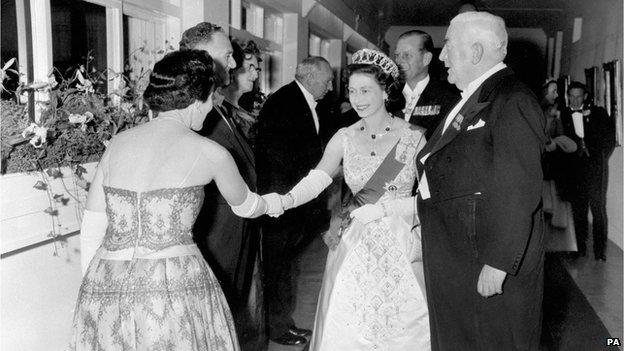
Parliament House in Canberra was the scene of a glittering occasion on the Queen's 1963 tour
A poll in the Sydney Morning Herald published on the morning of the couple's arrival in Australia stated, in the words of the paper, that "support for an Australian republic has slumped to its lowest level in more than three decades."
The poll suggested that 51% of those questioned favoured keeping the monarchy, with 42% backing a republic.
Perhaps most surprisingly, support for the monarchy was strongest among 18-24 year-olds. Sixty per cent of those questioned in that age group backed it, with only 28% wanting Australia to become a republic.
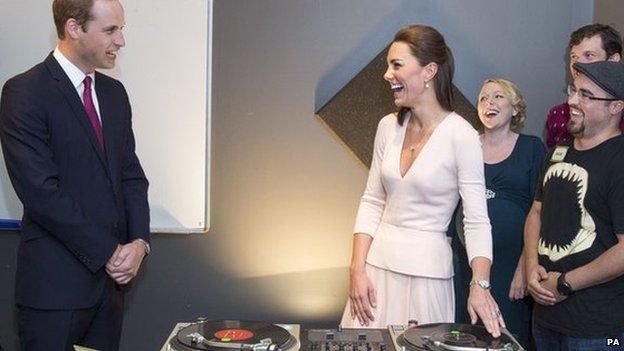
Catherine even tried her hand at DJ-ing during the tour - with on-lookers declaring her the winner above her husband
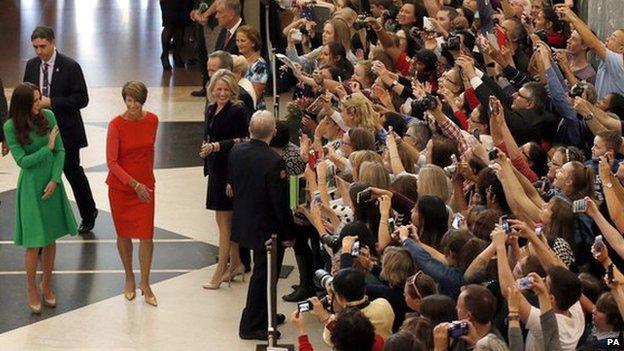
While crowds gathered to see the royal couple, they were smaller in number than for royal visits in years gone by

However, the streets surrounding the Civic Centre in Adelaide were packed with people trying to catch a glimpse of the royals
Both countries now have strongly pro-monarchy prime ministers.
Australia's Tony Abbott is a particularly fervent supporter, even going so far - in a speech in Parliament House in front of William and Catherine - to declare with confidence that their son would one day be welcomed to Australia as King George VII.
Republicans have always believed that their best chance will come when the reign of Elizabeth II finally draws to a close.
Yet there is scant evidence of a desire in either country to seek constitutional change. For the moment at least, the status quo rules: people appear to be comfortable with what they have.
Mr Abbott expressed it this way: "The best things in life are those that have stood the test of time."
He was referring to the monarchy, and the visit of William, Catherine and baby George has given Australia and New Zealand a close-up glimpse of a tried and tested institution in an up-dated, 21st Century format.
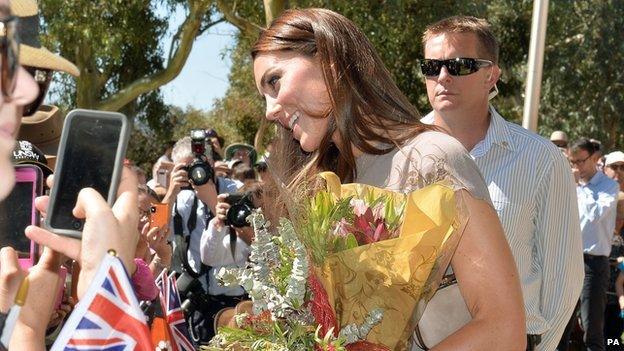
The couple have been praised for their 'easy and accessible' style of chatting to people
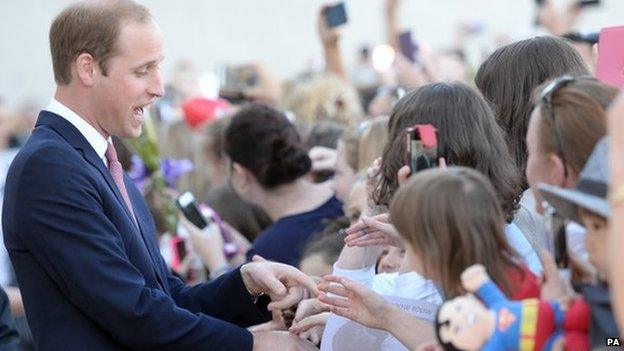
Prince William's favoured greeting is: "Hi guys - how are you doing?"
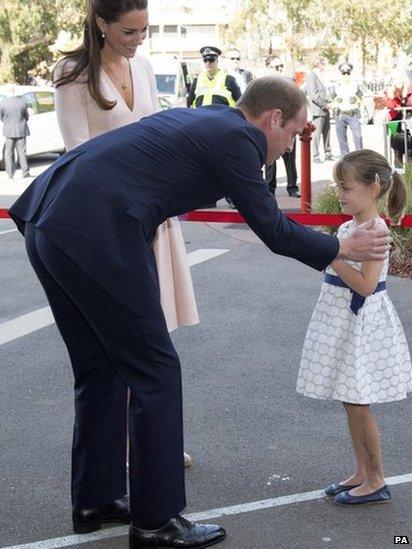
The Duke and Duchess of Cambridge met Lauren Stepherson, aged six, in Adelaide
Their style is easy and accessible. William's most frequently used greeting to people on walkabouts is, "Hi guys - how are you doing?"
Catherine, too, has deployed her very carefully enunciated small-talk (posher-sounding by far than William when you talk to her) to good effect.
They take time, they listen. They're unfailingly polite. Time and again people who have met them have been surprised at how "normal" they seem.
Performance
And, yes - of course - in a sense it's all a performance. They know that's what's expected of them but they have succeeded in perfecting that "trick" of the most successful royals, of apparent intimacy and interest with hundreds of strangers for a few moments, whilst maintaining the distance and dignity that their position demands.
Add to that their willingness to join in and have a go, especially if it is something sporty, and you have a potent crowd-pleasing formula.
William has always made it clear that he will do things "his way". He is not driven in the same way as his father.
People have commented that the programme he and Catherine have undertaken over the three weeks of the tour has been comparatively light. Engagements have not been packed in as they would have been for Prince Charles or, years ago, for the Queen.
Yet, to quote Prime Minister Abbott in Canberra again, the trip has been "one of the very best royal visits" Australia has experienced.
In this trio of William, Catherine and George the monarchy seems to have found powerful ambassadors. Australia and New Zealand's republicans would appear to have some thinking to do.
- Published9 April 2014
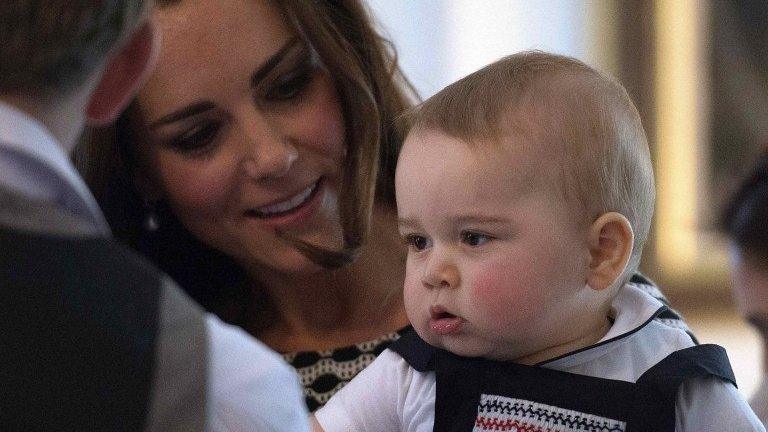
- Published20 April 2014
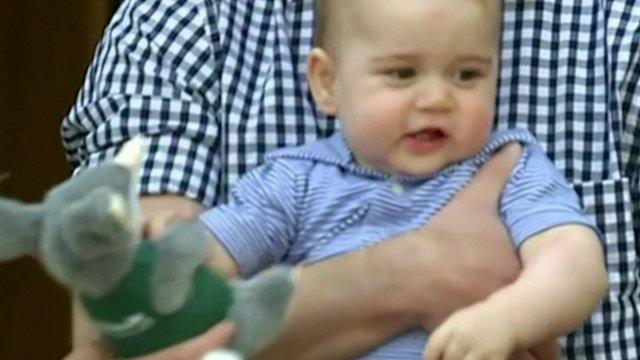
- Published18 April 2014
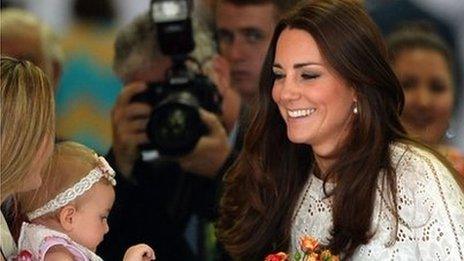
- Published11 April 2014
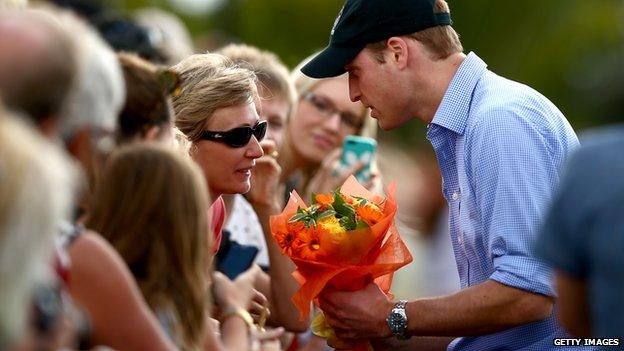
- Published9 April 2014
